By Anna Husarska and Mikhail Reva
February 23, 2024 at 3:25 p.m. EST
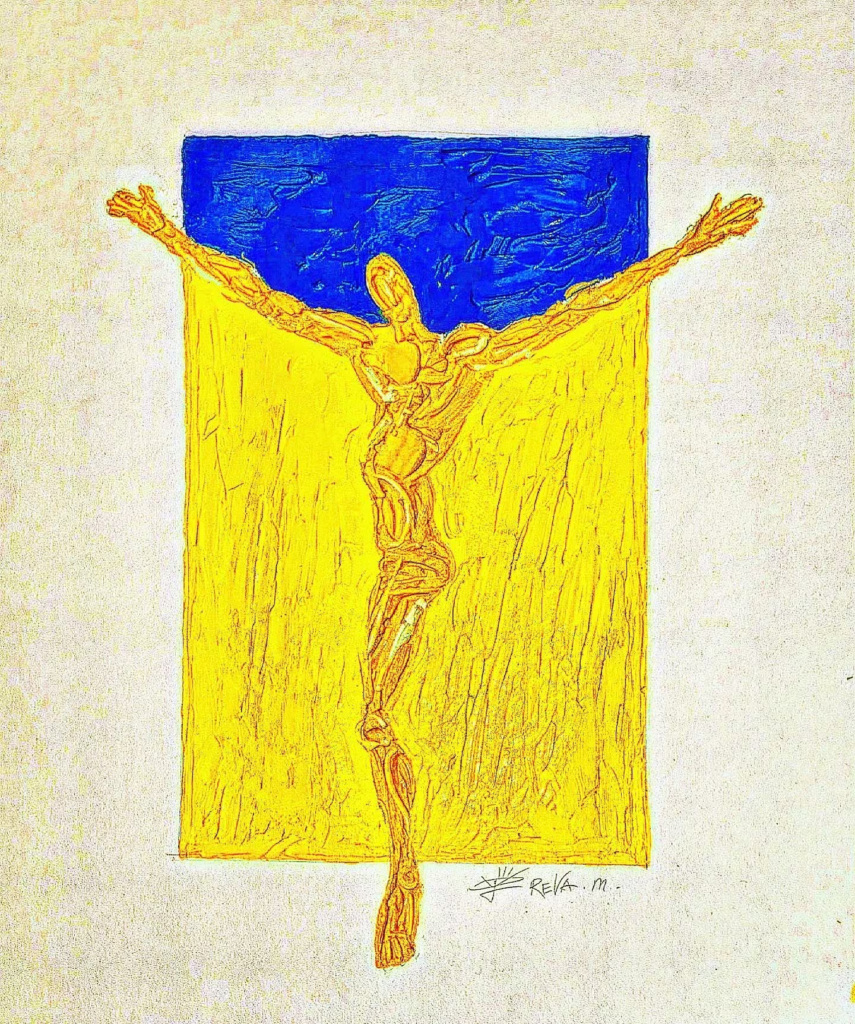
Upon Ukraine’s fate in this war may hang the fate of peace on earth. (Mikhail Reva)
Anna Husarska is a journalist and policy analyst. Mikhail Reva is a painter and a sculptor.
Two years ago, when Russia launched its war against Ukraine, Mikhail Reva, a sculptor, was working on a fountain in Dnipro, a city in the center of the country that is now close to the front lines. Before the full-scale invasion, on Feb. 24, 2022, Reva was known for public sculptures that could be found around the country. After the invasion, he became known for something else: protest art.
Through his work, Reva joined the resistance, as he puts it. He screamed his outrage with ink and paint on paper and, later, by welding chunks of shrapnel, broken shell casings and ragged missile fragments into giant metal sculptures. He used wartime materiel to craft a huge Russian bear titled “Moloch, the Beast of War”; he gathered spent bullet casings to create “Russian Souvenir,” a 1,200-pound nesting doll.
Reva lives and works in his hometown of Odessa. In 2022, his workshop was hit by a missile while he was in Bucha, the site of a searing Russian atrocity. His sculptures endured a close call when a missile hit the Odessa National Fine Arts Museum in November.
Reva is now preparing a project for the Venice Biennale; it will be made from machine gun bullets.
The images below are some of the first created by Reva after the invasion; the captions are his words. To my eyes, Reva’s work, like the spirit of Ukrainians, shines through even in the darkest of times.
— Anna Husarska
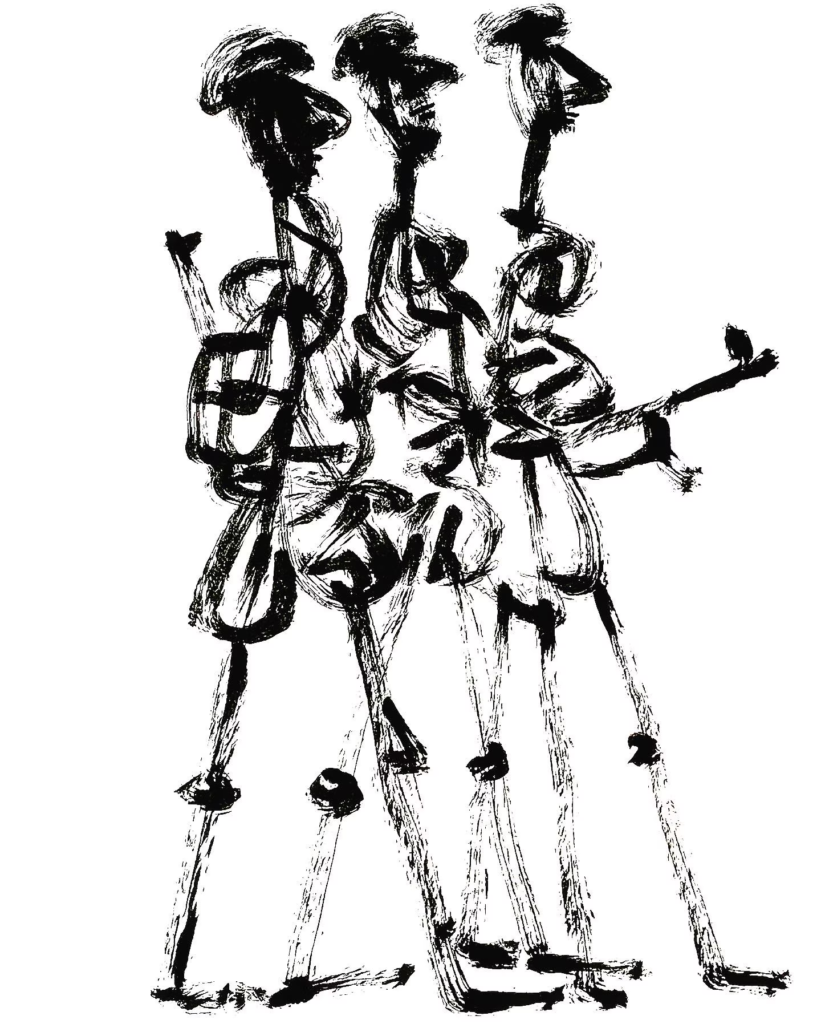
(Mikhail Reva)
This quick sketch represents the occupiers who came to kill us. They are people with no faces and no features. They brought fear. It was fear I saw in the eyes of my 88-year-old mother, a fear that she, as a 10-year-old, felt during World War II.
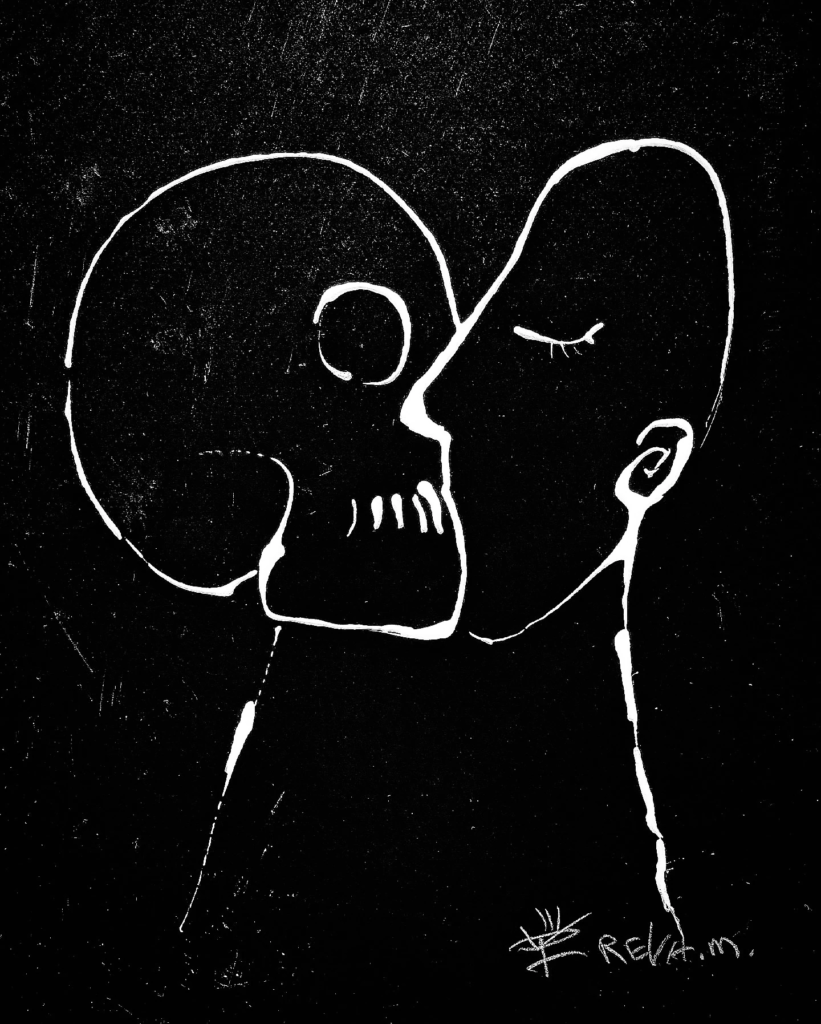
(Mikhail Reva)
“The Russian Kiss of Death” is another early reaction to the invasion. It’s a version of those kisses that Leonid Brezhnev, the Soviet leader, used to force on Erich Honecker, the East German leader. Back then the kisses were unwanted; now, they are fatal.
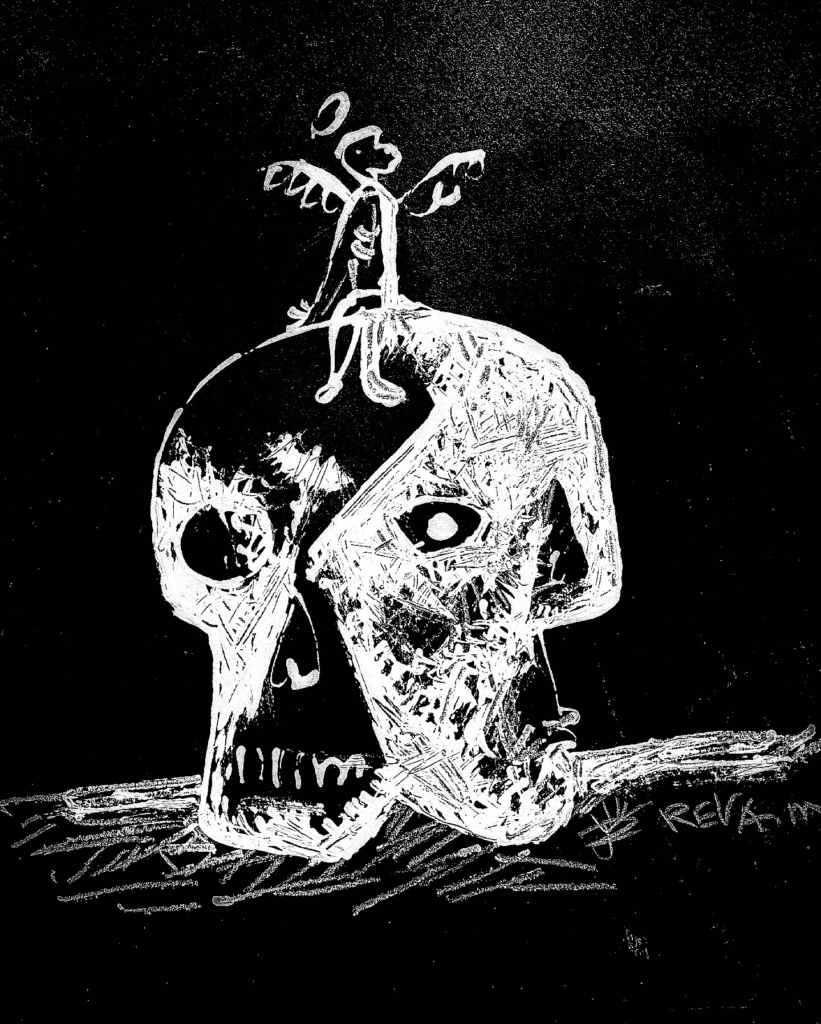
(Mikhail Reva)
This is a skull of what was once a human being. An angel protects the soul of this human that is no more.
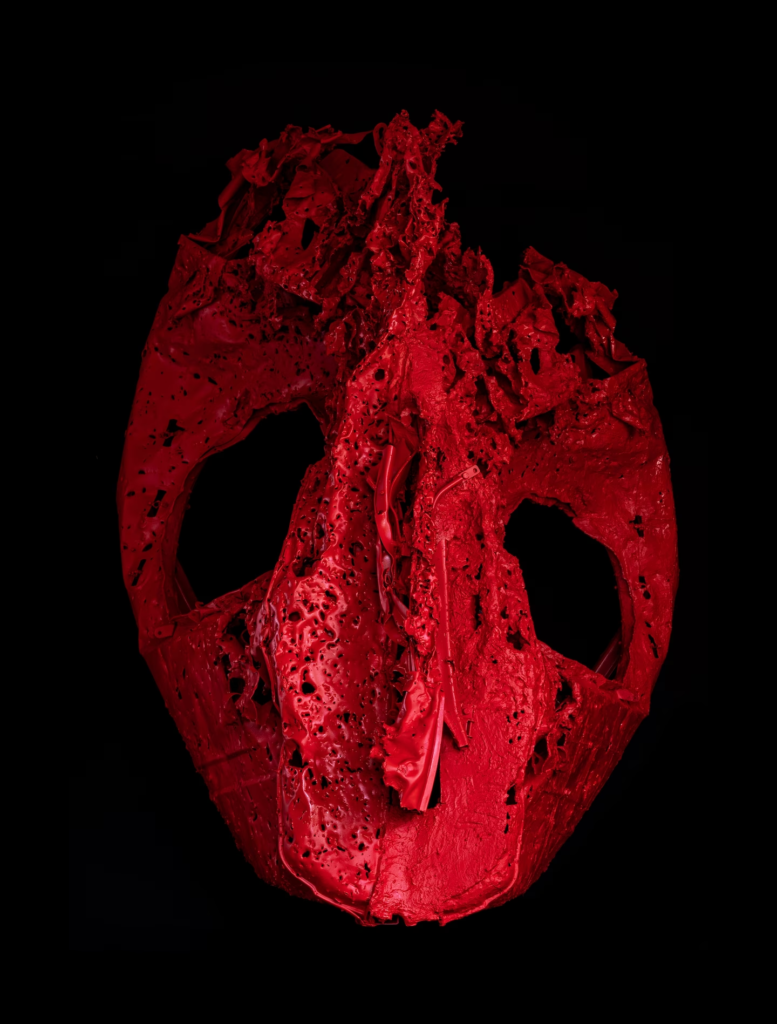
(Mikhail Reva)
The story of this skull is the story of this war. Half of this sculpture is made from the remains of the roof of a Russian Kamaz truck, destroyed by our forces. I did a 3D scan of it with the help of some tech-savvy friends in Odessa. We used artificial intelligence to re-create the other half. Then we 3D-printed the whole thing and painted it red. I call it “The Red Dragon.”
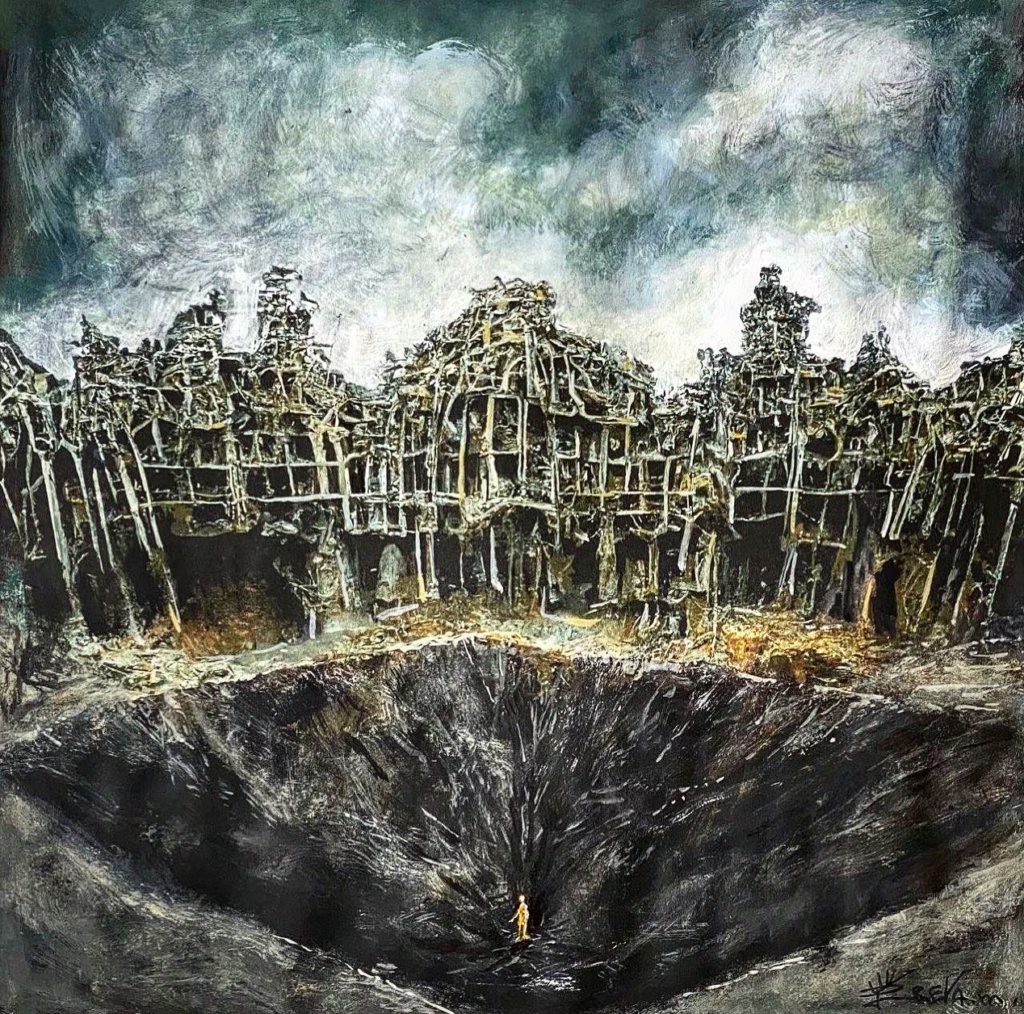
(Mikhail Reva)
This is one of the few illustrative pieces that I have painted since the invasion. I saw a crater like this in the garden of my dacha outside Odessa; I saw another one in Kharkiv, the second biggest city in Ukraine and a place so close to the Russian border that air-raid warnings don’t provide enough time to hide. I painted one defenseless man in the depth of the crater, but for me the death of one small human represents the death of so many Ukrainians. The toll continues to grow.
